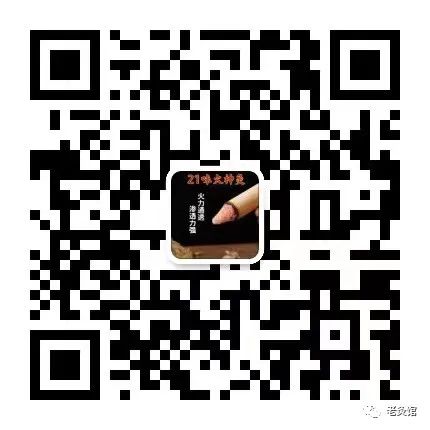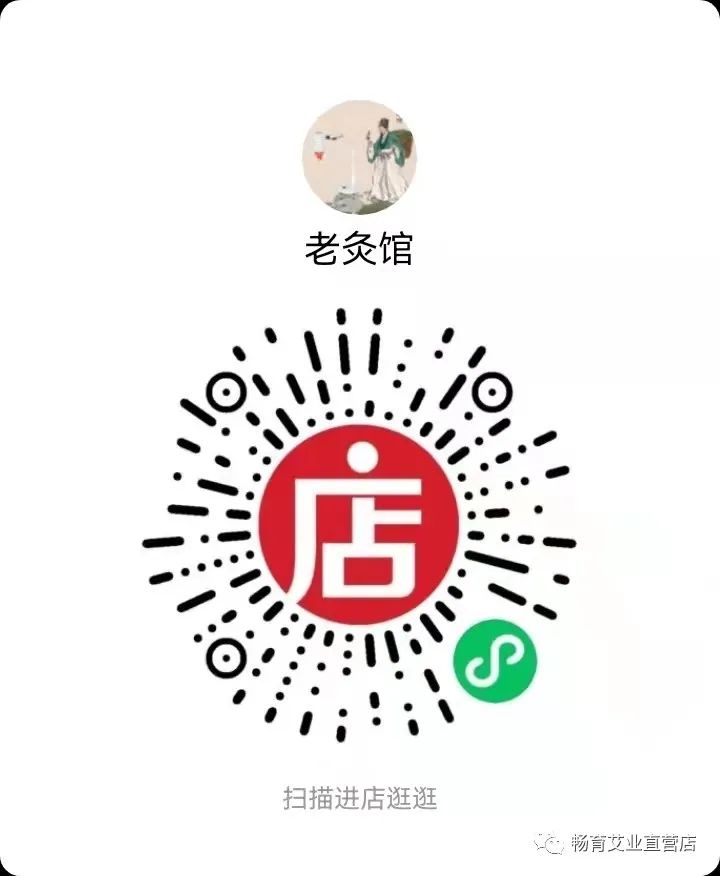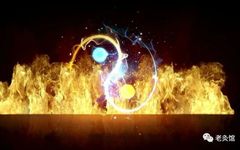1. Yin Deficiency with Excess Fire, 2. Yang Deficiency with Cold, 3. Both Yin and Yang Deficiency, 4. Liver Qi Stagnation
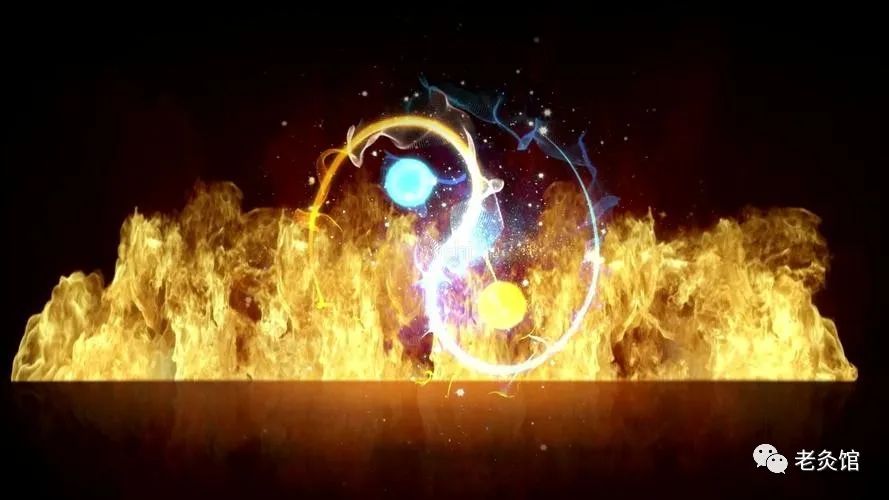 (1) Yin Deficiency with Excess Fire is the most common type of patient, with a very high incidence, primarily affecting middle-aged and elderly individuals, though it is also seen in adolescents. This condition is characterized by internal heat due to Yin deficiency, leading to symptoms such as heat, inflammation, and fire. In TCM, fire and inflammation are understood to have the same pathological mechanism. However, there are two types of fire: true fire and deficient fire, which are fundamentally different in nature.
(1) Yin Deficiency with Excess Fire is the most common type of patient, with a very high incidence, primarily affecting middle-aged and elderly individuals, though it is also seen in adolescents. This condition is characterized by internal heat due to Yin deficiency, leading to symptoms such as heat, inflammation, and fire. In TCM, fire and inflammation are understood to have the same pathological mechanism. However, there are two types of fire: true fire and deficient fire, which are fundamentally different in nature.
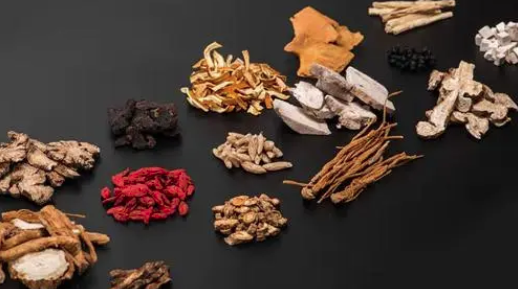
True fire refers to conditions where patients experience high fever, confusion, sores, and abscesses. Conditions such as cellulitis, abscesses, joint inflammation, lung abscess, intestinal abscess, lymphadenopathy, meningitis, and various acute inflammatory diseases are caused by true fire, which is typically due to bacterial infections. Viral infections, such as influenza, also cause true fire. These conditions respond well to Western antibiotics and antiviral medications, which are often more effective and faster than TCM heat-clearing herbs. For the aforementioned conditions, Western medical treatment is optimal.
Deficient fire manifests in conditions such as hyperthyroidism, five-center heat, night sweats, irritability, insomnia, and fever without elevated blood counts; chronic gastritis, superficial gastritis, gastric erosion, exudative gastritis, gastric congestion, gastric ulcers, duodenal ulcers, atrophic gastritis, bile reflux gastritis, hepatitis A and B, cholecystitis, chronic prostatitis, benign prostatic hyperplasia; cystitis, urethritis, gynecological inflammation, and chronic pharyngitis and esophagitis are all caused by deficient fire. The pathogenesis of these diseases is not due to bacteria or viruses but rather due to excess fire from Yin deficiency. Treatment for these conditions must employ TCM methods to nourish Yin and reduce fire for a high cure rate. Many patients with excess fire due to Yin deficiency have spent years on Western medications and antibiotics, incurring significant costs without resolution, and in some cases, their conditions worsen or recur easily. The pathogenesis of excess fire due to Yin deficiency is often caused by excessive consumption of spicy foods, excessive blood loss, staying up late, irritability, excessive surgeries, frequent curettage, overexertion, excessive sexual activity, prolonged illness, excessive sweating, and malnutrition, leading to excessive loss of blood and fluids, resulting in Yin deficiency. When Yin is deficient, Yang becomes excessive, leading to a series of symptoms of excess fire. The primary treatment for these conditions is to nourish Yin and reduce fire, as well as to nourish Yin and subdue Yang. Yin deficiency is usually primarily related to Kidney Yin deficiency. The kidneys store essence, generate essence, and house true Yin. The kidneys govern water, and all organs rely on water for nourishment, just as all living beings require water to survive. When Kidney Yin is deficient, the five organs are deprived of nourishment. If Kidney Yin is not deficient, the five organs are well-nourished. “When Yin is balanced, Yang is harmonious; when Yin is balanced, Yang is secreted.” Yin deficiency inevitably leads to fire. The liver is a Yang organ, inherently associated with wood, which can generate fire. When Kidney Yin is deficient, the liver wood loses its nourishment, leading to uncontrolled liver fire, which can subsequently cause gallbladder inflammation. Wood can control earth, and the spleen and stomach belong to earth, which can lead to excessive gastric fire and gastritis. Nine out of ten people suffer from gastric diseases; the number of individuals with gastric issues is high in the current population. Western medicine treats the stomach without recognizing that gastritis is caused by liver fire, which is the essence of the problem. Gastritis is a symptom, and treating the symptom without addressing the root cause leads to prolonged illness. Some individuals have taken Western medications for years, even decades, spending a lot of money without a cure. According to TCM principles of treating the root cause, nourishing Yin and reducing fire can quickly cure gastric diseases. I encounter many gastric patients daily, and using TCM to treat gastric diseases yields quick results, shorter treatment times, and lower costs, earning widespread praise and positive feedback from patients.The above examples illustrate that excess fire due to Yin deficiency can lead to many other conditions, as shown in the following image:
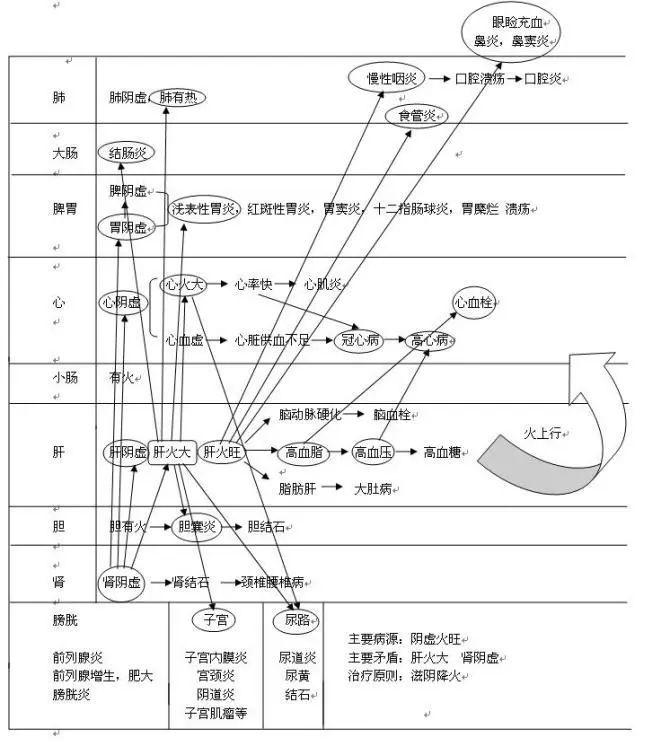
Next, I will discuss the treatment principles for various diseases caused by excess fire due to Yin deficiency. In my over 40 years of medical practice, I have summarized a complete set of treatment methods for internal diseases. Although I use ancient formulas, I have found that relying solely on single or compound prescriptions is often insufficient for complex syndromes such as difficult-to-treat conditions, menopausal syndrome, geriatric syndrome, and chronic conditions. A multi-faceted approach is necessary to achieve satisfactory results. The treatment method for excess fire due to Yin deficiency is to nourish Yin and reduce fire. For Kidney Yin deficiency, Liu Wei Di Huang Tang (Six-Ingredient Rehmannia Decoction) is the foundational formula. If the patient only has Kidney Yin deficiency without signs of excess fire, Liu Wei Di Huang Tang is sufficient. If symptoms such as dry mouth and throat appear, indicating that Yin deficiency has begun to generate fire, Zhi Bai Di Huang Tang (Anemarrhena and Phellodendron Decoction) should be used. If Yin deficiency leads to fire, and Kidney Yin deficiency is not treated promptly, it can quickly lead to liver fire. That is, Kidney Yin deficiency → Liver Fire → Gallbladder Inflammation → Gallstones. Patients with Kidney Yin deficiency may experience symptoms such as lower back pain, weakness in the legs, dizziness, tinnitus, memory loss, forgetfulness, reduced sexual function, and premature ejaculation. Liver fire can lead to symptoms such as bitter mouth, dry throat, irritability, dry stools, yellow urine, conjunctival injection, tinnitus, and gallbladder inflammation, which are all symptoms of excess fire due to Yin deficiency. The treatment for these conditions is to nourish Yin and reduce liver fire. The combination of Zhi Bai Di Huang Tang, Long Dan Cao Tang (Gentiana Decoction), and Qi Ju Di Huang Tang (Lycium and Chrysanthemum Decoction) forms three effective formulas. Liver fire can cause gastric inflammation, leading to gastrointestinal dysfunction and gastritis. Fire rising can also lead to esophagitis, pharyngitis, and oral inflammation. It can also cause heart fire, leading to irritability and insomnia. Additionally, it can cause lung heat, resulting in chest tightness and other symptoms, leading to excessive fire in the San Jiao (Triple Burner), requiring the addition of San Huang Tang (Three Yellow Decoction). Gastritis can cause gastric distension, necessitating the addition of Bao He Wan (Preserve Harmony Pill) and Ping Wei San (Calm the Stomach Powder). If gastric erosion occurs, pain-relieving herbs such as Bai Ji (Bletilla), Bai He (Lily Bulb), Fo Shou (Citron), and Yan Hu Suo (Corydalis) should be added. If gastritis leads to gastric bleeding, San Qi (Notoginseng), Shu Di Huang (Rehmannia), Zhi Zi (Gardenia), Luo Bo Zi (Radish Seed), and Bai Zhu (Atractylodes) should be added. For tachycardia, add Bai Zi Ren (Biota Seed), Shan Yao (Chinese Yam), Sheng Di (Raw Rehmannia), Mai Ya (Barley Sprout), and Gan Cao (Licorice). For myocarditis, add Tao Ren (Peach Kernel), Hong Hua (Safflower), Shan Zhu Yu (Cornus), Che Qian Zi (Plantago Seed), Ji Nei Jin (Chicken Gizzard Lining), and Dang Shen (Codonopsis). For palpitations, add Long Gu (Dragon Bone), Mu Li (Oyster Shell), Zhen Zhu (Pearl), Dan Pi (Moutan), Mu Tong (Akebia), and Cang Zhu (Atractylodes). For insomnia, add Ye Jiao Teng (Polygala), Ci Shi (Magnetite), Ze Xie (Alisma), Huang Lian (Coptis), Hou Po (Magnolia Bark), and Mu Xiang (Saussurea). For significant heart fire, add Bai Zi Ren, Fu Ling (Poria), Huang Qin (Scutellaria), and Chuan Xiong (Chuanxiong Rhizome). For severe gastric distension, add Bing Lang (Areca), Gou Qi Zi (Goji Berry), Da Huang (Rhubarb), Dan Shen (Salvia), and Yuan Zhi (Polygala). For gastritis with red spots, increase the dosage of Da Huang Lian (Coptis), add Ju Hua (Chrysanthemum), Zhi Shi (Bitter Orange), Chi Shao (Red Peony), and Fu Shen (Poria). For excessive gastric acid, add Wu Zei Gu (Cuttlefish Bone), Wa Leng Zi (Cochinchina Momordica), Mai Dong (Ophiopogon), Shi Jue Ming (Abalone Shell), Long Gu, and Long Yan Rou (Longan). For hiccups, add Dai Zhe Shi (Hematite), Wu Wei Zi (Schisandra), and Mu Li. For dry stools, add Xiao Cheng Qi Tang (Minor Order the Qi Decoction). Comprehensive treatment includes nourishing Yin, reducing fire, nourishing blood, calming the spirit, and strengthening the spleen and stomach. The combination of Zhi Bai Di Huang Tang, Long Dan Cao Tang, San Huang Tang, Xiao Cheng Qi Tang, Jian Pi Wan (Strengthen the Spleen Pill), Gui Pi Tang (Restore the Spleen Decoction), Ping Wei San, Bao He Wan, Qi Ju Di Huang Tang, and Mai Wei Di Huang Tang, along with Chuan Xiong, Dan Shen, and Chi Shao.
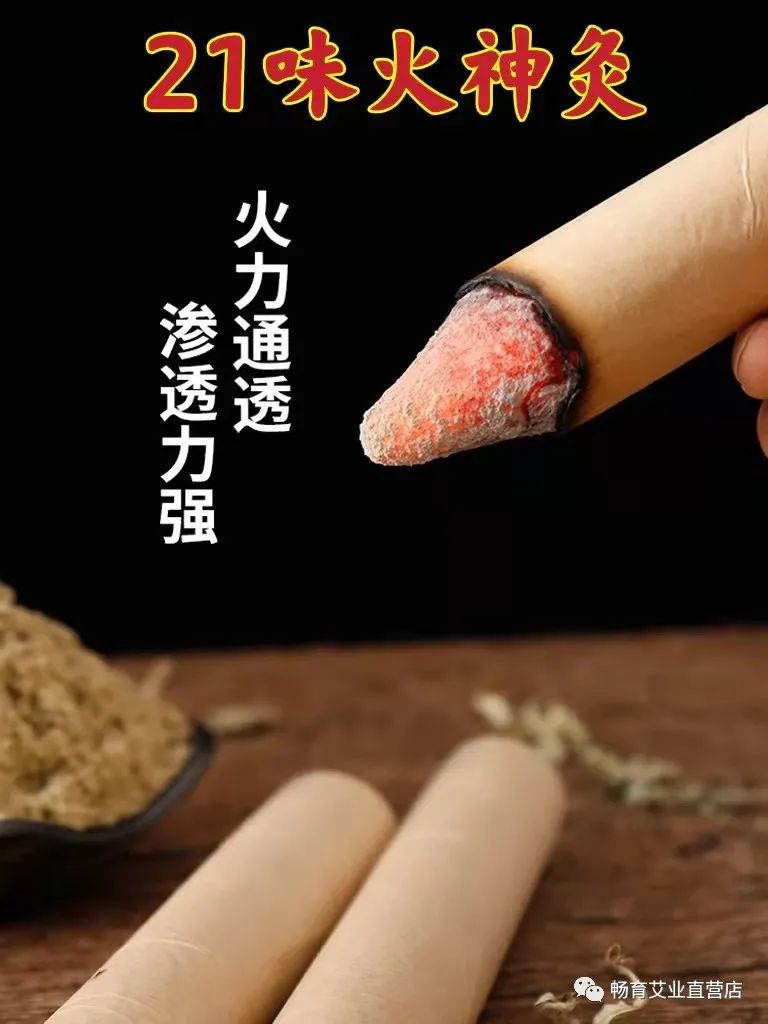
Diagram of various diseases caused by excess fire due to Yin deficiency:
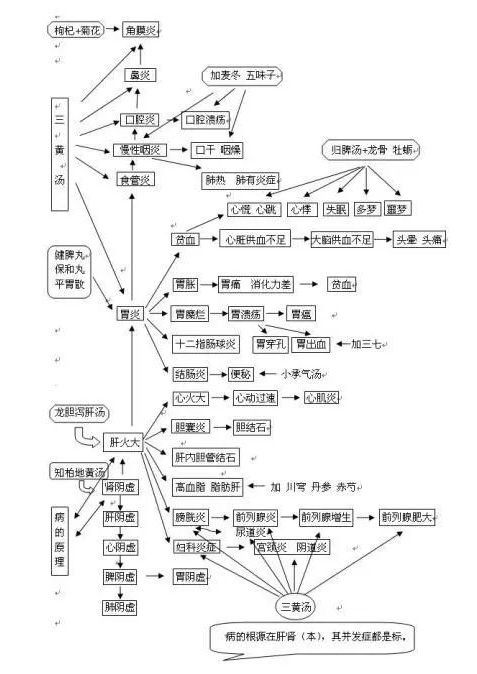
Patients with excess fire due to Yin deficiency are primarily young adults aged 20-40. As age increases, if excess fire due to Yin deficiency is not treated promptly, the condition can worsen, gradually leading to Yang hyperactivity. The condition of Yin deficiency with Yang hyperactivity is more complex. Endocrine disorders, organ dysfunction, menopausal syndrome, geriatric syndrome, and various difficult-to-treat conditions are directly related to excess fire due to Yin deficiency and Yang hyperactivity, as shown in the following image:
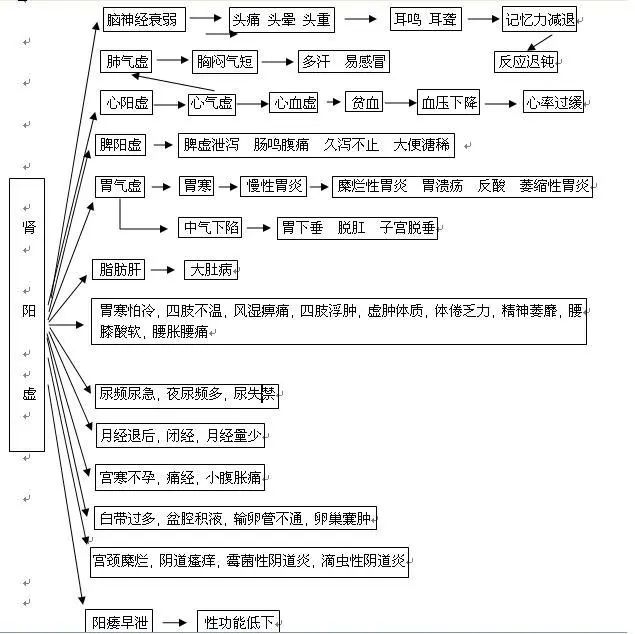
Treating these conditions requires not only nourishing Yin and reducing fire, nourishing blood, calming the spirit, and warming the middle and dispelling cold, but also invigorating blood circulation, relieving pain, nourishing Yin, subduing Yang, and calming the liver and extinguishing wind. The formulas include Zhi Mu (Anemarrhena), Chai Hu (Bupleurum), Bai Zhu (Atractylodes), Dang Shen (Codonopsis), Huang Bai (Phellodendron), Long Dan Cao (Gentiana), Bian Dou (Hyacinth Bean), Huang Qi (Astragalus), Sheng Di (Raw Rehmannia), Zhi Zi (Gardenia), Yi Ren (Job’s Tears), Mu Xiang (Saussurea), Shan Yao (Chinese Yam), Sheng Di, Sha Ren (Amomum), Zao Ren (Jujube Seed), Bai Shao (White Peony), Dan Pi (Moutan), Mu Tong (Akebia), Dang Gui (Angelica), Long Gu (Dragon Bone), Ze Xie (Alisma), Huang Lian (Coptis), Huang Qi (Astragalus), Mu Li (Oyster Shell), Fu Ling (Poria), Huang Qin (Scutellaria), Mu Xiang (Saussurea), Dai Zhe Shi (Hematite), Gou Qi Zi (Goji Berry), Ban Xia (Pinellia), Zao Ren (Jujube Seed), Zhen Zhu Mu (Mother of Pearl), Ju Hua (Chrysanthemum), Hou Po (Magnolia Bark), Yuan Zhi (Polygala), Shi Gao (Gypsum), Mai Dong (Ophiopogon), Da Huang (Rhubarb), Fu Shen (Poria), Shi Jue Ming (Abalone Shell), Wu Wei Zi (Schisandra), Zhi Shi (Bitter Orange), Long Yan Rou (Longan), Ci Shi (Magnetite), He Shou Wu (Fo-Ti), Chuan Xiong (Chuanxiong Rhizome), Ye Jiao Teng (Polygala), Nu Zhen Zi (Ligustrum), Dan Shen (Salvia), and Chi Shao (Red Peony). For patients with high blood pressure, add Tian Ma (Gastrodia), Gou Teng (Uncaria). For patients with high blood sugar, add Tian Hua Fen (Trichosanthes), Ge Gen (Pueraria), and Yu Mi Xu (Corn Silk).For cerebral thrombosis and cardiac thrombosis, add San Qi (Notoginseng), Tao Ren (Peach Kernel), and Hong Hua (Safflower). For cervical spondylosis and lumbar spondylosis, add Shuang Ji Sheng (Dendrobium), Chuan Duan (Dipsacus), San Qi, Tao Ren, and Hong Hua. For damp-heat conditions, add Ku Shen (Sophora), Bai Zhi (Angelica), Tu Fu Ling (Smilax), and Cang Zhu (Atractylodes). For itching, add Wu Mei (Mume), She Chuang Zi (Cnidium), and Bai Hua She Cao (Oldenlandia).(2) Yang Deficiency with Cold Patients with Yang deficiency and cold are most commonly seen in winter, primarily affecting middle-aged individuals, with a higher incidence in women. Yang is tangible. One can observe a person’s Yang energy by their external appearance. A person with spirit, a loud voice, bright eyes, a rosy complexion, black hair, a strong body, quick thinking, and rapid responses exhibits the effects of Yang. Yang deficiency is usually primarily related to Kidney Yang deficiency, which leads to Spleen Yang deficiency. Symptoms include cold intolerance, cold extremities, limb pain, swelling, and a weak constitution. Cold in the stomach can lead to excessive gastric acid, loose stools, and abdominal pain. In women, cold in the uterus can cause infertility, delayed menstruation, or amenorrhea, pelvic fluid accumulation, and blocked fallopian tubes, while men may experience impotence, premature ejaculation, reduced sexual function, frequent urination at night, and incontinence. Yang deficiency can also lead to fatigue, mental sluggishness, slow movement, easy fatigue, low blood pressure, bradycardia, and susceptibility to colds. Yang deficiency can also lead to Qi deficiency, resulting in conditions such as gastric prolapse, uterine prolapse, and rectal prolapse. It can also affect fat metabolism, leading to fatty liver and abdominal obesity. When Yang is deficient, Yin becomes excessive, and when Yin is excessive, Yang declines. The vigorous Yang energy leads to strength; a person with sufficient Yang energy is spirited and energetic, while the opposite leads to fatigue and sluggishness. Yang can transform Qi, which belongs to Yang. Yang deficiency can lead to Qi deficiency. Kidney Yang deficiency can lead to Kidney Qi deficiency. Heart Yang deficiency can lead to Heart Qi deficiency. Qi can transform blood, and Qi and blood share the same source, leading to blood deficiency in the heart. Spleen Yang deficiency can lead to Spleen Qi deficiency and gastric Qi deficiency. Spleen Qi deficiency can lead to Lung Qi deficiency, and Heart blood deficiency can lead to Lung Qi deficiency, while Heart Qi deficiency can lead to Lung Qi deficiency. The following image illustrates the diseases caused by Yang deficiency with cold:
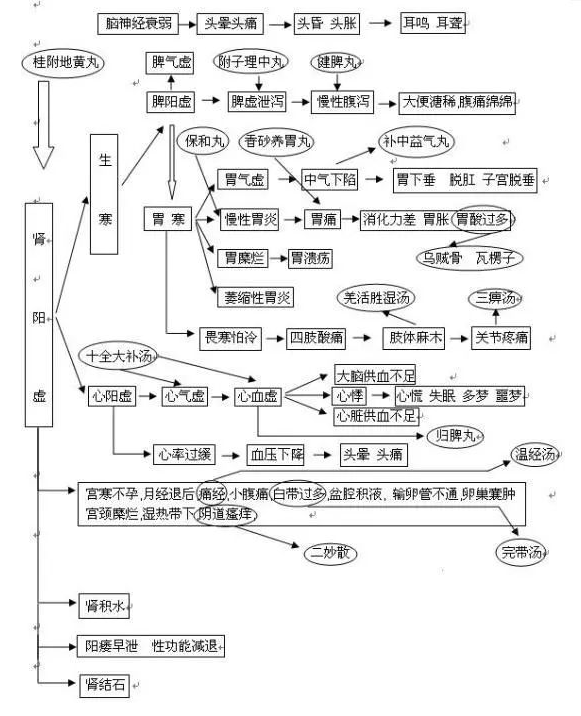
Yang deficiency with cold leads to dampness, which causes pain. Cold is constricting, while dampness is obstructive. The combination of cold and dampness leads to obstruction. Cold tends to contract, while heat tends to rise. Cold and dampness can obstruct the flow of Qi and blood, leading to wind-cold-damp obstruction and joint pain. Severe cold can prevent Yang from rising, leading to weakness and fatigue in the limbs. Kidney Yang deficiency leads to Spleen Yang deficiency, causing Spleen Yang to be weak, resulting in dampness obstructing the Spleen. The Spleen cannot transform dampness, as it prefers dryness and dislikes dampness, leading to Spleen deficiency, diarrhea, loose stools, and abdominal pain. Spleen Yang deficiency can lead to cold in the stomach, causing stomach pain, bloating, poor digestion, and excessive gastric acid secretion. Spleen Qi deficiency can lead to gastric Qi deficiency, resulting in gastric prolapse, uterine prolapse, and rectal prolapse. Kidney Yang deficiency can lead to Heart Yang deficiency, resulting in bradycardia and low blood pressure. Kidney Yang deficiency can lead to impotence and premature ejaculation in men, while women may experience infertility, increased vaginal discharge, blocked fallopian tubes, pelvic fluid accumulation, ovarian cysts, and persistent abdominal pain. Kidney Yang deficiency can also cause dysmenorrhea, amenorrhea, and delayed menstruation. Kidney Yang deficiency can disrupt water metabolism, leading to kidney swelling and generalized edema, particularly in the lower extremities. Excessive dampness can lead to itching, such as generalized itching and eczema, which are caused by excessive cold and dampness obstructing the body. The treatment principles for Yang deficiency with cold are to tonify the kidneys and strengthen Yang, and to warm the middle and dispel cold. The primary treatment is to warm the meridians and promote Yang, while the secondary treatment is to tonify Qi, strengthen the Spleen and stomach, and nourish blood. The formulas include Gui Fu Di Huang Tang (Cinnamon and Rehmannia Decoction), Fu Zi Li Zhong Wan (Aconite and Ginseng Decoction), Bu Zhong Yi Qi Tang (Tonify the Middle and Benefit Qi Decoction), Shi Quan Da Bu Tang (All-Inclusive Great Tonifying Decoction), Jian Pi Wan, Gui Pi Tang, Bao He Wan, Xiang Sha Yang Wei Wan (Aromatic Sand to Nourish the Stomach Pill), and Du Huo Sheng Shi Tang (Angelica to Overcome Dampness Decoction). For cervical erosion, gynecological itching, and damp-heat discharge, add Huang Bai (Phellodendron), Tu Fu Ling (Smilax), and Cang Zhu (Atractylodes). For trichomonas and fungal infections, add Ku Shen (Sophora) and She Chuang Zi (Cnidium). For gastric erosion with damp-heat, add Huang Lian (Coptis). For dysmenorrhea and lower abdominal pain, add Wu Zhu Yu (Evodia).Yang deficiency with cold treatment medications include:Prescription: Tonify the kidneys and strengthen Yang, warm the middle and dispel cold.Fu Zi (Aconite), Dang Shen (Codonopsis), Sheng Ma (Cimicifuga), Gui Zhi (Cinnamon Twig), Rou Gui (Cinnamon), Huang Qi (Astragalus), Chai Hu (Bupleurum), Cang Zhu (Atractylodes), Shu Di (Rehmannia), Dang Gui (Angelica), Sha Ren (Amomum), Bian Dou (Hyacinth Bean), Shan Yao (Chinese Yam), Bai Shao (White Peony), Rou Dou Kou (Nutmeg), Yin Yang Huo (Epimedium), Shan Zhu Yu (Cornus), Bai Zhu (Atractylodes), Chen Pi (Tangerine Peel), Ba Jiao (Morinda), Dan Pi (Moutan), Gan Cao (Licorice), Shan Zha (Hawthorn), Bu Guo Zhi (Psoralea), Ze Xie (Alisma), Mu Xiang (Saussurea), Shen Qu (Fermented Barley), Tu Si Zi (Dodder Seed), Fu Ling (Poria), Zao Ren (Jujube Seed), Luo Bo Zi (Radish Seed), He Shou Wu (Fo-Ti), Du Zhong (Eucommia), Yuan Zhi (Polygala), Mai Ya (Barley Sprout), Du Huo (Angelica), Niu Xi (Achyranthes), Long Yan Rou (Longan), Ji Nei Jin (Chicken Gizzard Lining), Qiang Huo (Notopterygium), Gan Jiang (Dried Ginger), Chuan Xiong (Chuanxiong Rhizome), Huang Lian (Coptis), and Huang Bai (Phellodendron). The explanation for the use of Huang Lian and Huang Bai is for those with dampness causing deficient heat.(3) Both Yin and Yang Deficiency: Patients with both Yin and Yang deficiency are also quite common, primarily affecting women, with a higher incidence in middle-aged individuals. The condition of both Yin and Yang deficiency is more complex and falls within the category of difficult-to-treat conditions and geriatric syndromes. If both Yin and Yang deficiency are not treated properly, it can often lead to kidney failure. Clinically, most cases of kidney failure are caused by both Yin and Yang deficiency. Patients with both Yin and Yang deficiency exhibit symptoms of both Yin deficiency and Yang deficiency. This condition cannot be treated by addressing Yin or Yang alone; both must be treated simultaneously. Nourishing Yin while also tonifying Yang, reducing fire while also dispelling cold, and treating both Yin and Yang simultaneously yield very satisfactory results; otherwise, the opposite occurs. Patients with both Yin and Yang deficiency may exhibit symptoms of both Yin deficiency leading to fire and Yang deficiency leading to cold. Most Yin-nourishing and fire-reducing medications are cold, while most warming and cold-dispelling medications are hot. Simply nourishing Yin and reducing fire will exacerbate Yang deficiency, while merely tonifying Yang and dispelling cold will intensify deficient fire. Therefore, nourishing Yin and reducing fire, while tonifying the kidneys and strengthening Yang, must be approached simultaneously to balance Yin and Yang, leading to patient recovery. Thus, the ultimate goal of TCM treatment is to maintain and regulate the balance of Yin and Yang within the body. The treatment for both Yin and Yang deficiency appears somewhat contradictory, as the properties of the medications may seem conflicting. This issue can be explained using the principle of meridian affinity in Chinese medicine. The ancestors of TCM discovered through long-term medical practice that each herb has its own meridian affinity; for example, kidney tonics enter the Kidney meridian, liver medications enter the Liver meridian, spleen tonics enter the Spleen meridian, heart medications enter the Heart meridian, and lung medications enter the Lung meridian. Each herb follows its own path, achieving its purpose. Various herbs exert their effects, resolving their respective contradictions. Symptoms of patients with both Yin and Yang deficiency typically include:Fear of heat and cold; excess above and deficiency below; feeling cold in the morning and evening, feeling hot at noon; feeling hot in sunny weather and cold in rainy weather; feeling cold in winter and spring, and hot in summer and autumn. They may experience both internal fire and external cold; both inflammation and cold dampness; excess fire in the upper body and cold dampness in the lower body; excessive sweating in the upper body and cold intolerance in the lower body; significant inflammation in the upper body and heavy cold dampness in the lower body. Symptoms may include bitter mouth, dry throat, weakness and fatigue in the limbs, irritability and heat, and cold dampness. Patients often experience dizziness, heaviness in the head, ear ringing, memory loss, forgetfulness, irritability, insomnia, palpitations, and shortness of breath. They may also experience gastrointestinal dysfunction, leading to spleen deficiency, weak stomach, poor digestion, loss of appetite, significant gastric inflammation, gastric erosion, loose stools, and ulcerative colitis, as well as a weak constitution, limb swelling, fatty liver, and abdominal obesity, among other conditions. The treatment principles for both Yin and Yang deficiency are to nourish Yin, reduce fire, nourish blood, calm the spirit, tonify the kidneys, and warm the middle and dispel cold. The prescription includes Zhi Bai Di Huang Tang, Gui Fu Di Huang Tang, San Huang Tang, Shi Quan Da Bu Tang, Gui Pi Tang, Jian Pi Wan, Bao He Wan, Ping Wei San, Xiang Sha Yang Wei Wan, Long Dan Cao Tang, and Fu Zi Li Zhong Wan.Zhi Mu (Anemarrhena), Chai Hu (Bupleurum), Cang Zhu (Atractylodes), Dang Shen (Codonopsis), Huang Bai (Phellodendron), Long Dan Cao (Gentiana), Bian Dou (Hyacinth Bean), Huang Qi (Astragalus), Sheng Di (Raw Rehmannia), Zhi Zi (Gardenia), Yi Ren (Job’s Tears), Mu Xiang (Saussurea), Shan Yao (Chinese Yam), Sheng Di, Sha Ren (Amomum), Zao Ren (Jujube Seed), Bai Shao (White Peony), Dan Pi (Moutan), Mu Tong (Akebia), Dang Gui (Angelica), Long Gu (Dragon Bone), Ze Xie (Alisma), Huang Lian (Coptis), Huang Qi (Astragalus), Mu Li (Oyster Shell), Fu Ling (Poria), Huang Qin (Scutellaria), Mu Xiang (Saussurea), Dai Zhe Shi (Hematite), Gou Qi Zi (Goji Berry), Ban Xia (Pinellia), Zao Ren (Jujube Seed), Zhen Zhu Mu (Mother of Pearl), Ju Hua (Chrysanthemum), Hou Po (Magnolia Bark), Yuan Zhi (Polygala), Shi Gao (Gypsum), Mai Dong (Ophiopogon), Da Huang (Rhubarb), Fu Shen (Poria), Shi Jue Ming (Abalone Shell), Wu Wei Zi (Schisandra), Zhi Shi (Bitter Orange), Long Yan Rou (Longan), Ci Shi (Magnetite), He Shou Wu (Fo-Ti), Chuan Xiong (Chuanxiong Rhizome), Ye Jiao Teng (Polygala), Nu Zhen Zi (Ligustrum), Dan Shen (Salvia), and Chi Shao (Red Peony). (4) Liver Qi Stagnation: The internal causes of the seven emotions—joy, anger, worry, thought, sadness, fear, and shock—are the seven emotions that affect everyone. Joy can lead to Qi stagnation (harmful to the body), anger can lead to Qi rising (harmful to the liver), sadness can lead to Qi depletion (harmful to the lungs), fear can lead to Qi sinking (harmful to the kidneys), overthinking can harm the spleen, worry can harm the heart, and shock can harm the spirit. TCM believes that the pathogenesis of internal diseases is directly related to the seven emotions, with anger being particularly prominent among patients. Anger leads to Qi rising. Excessive Qi can harm the liver, which governs emotions. The liver is associated with wood, which has a natural tendency to expand. The liver prefers to be free and dislikes repression. When people are unhappy or depressed, it can lead to anger. Long-term mental and emotional repression can lead to stagnation of liver Qi, causing Qi stagnation, which can lead to blood flow issues. Mild cases can lead to liver Qi stagnation and discomfort, while severe cases can lead to liver Qi stagnation, endangering life. Conflicts between individuals, grudges, fights, marital disharmony, economic hardship, and career setbacks can all lead to unhappiness. Over time, this can lead to emotional distress, causing Qi reversal and stagnation, resulting in various diseases. In my nearly 40 years of medical practice, I have found that patients with internal diseases caused by Qi stagnation account for 50% of the total incidence in the population. In other words, one in every two patients with internal diseases has a condition caused by emotional distress. However, these internal diseases caused by Qi stagnation cannot be detected by Western medical instruments. The various deficiencies in the body’s organs cannot be detected by instruments either. Many patients undergo tests due to discomfort, only to find normal results, but upon pulse diagnosis, I can identify many issues. Instruments are not omnipotent; they can only detect tangible changes in the body’s organs. Many patients place too much trust in instruments, feeling unwell and undergoing comprehensive checks, while some doctors rely solely on instrument indicators for diagnosis. While instruments are scientific, they are not comprehensively scientific.
